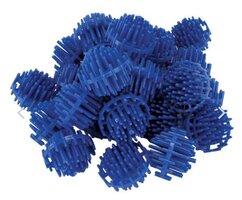MichaelJ
Member
Yes, I think so. Plants and the substrate. I can see that happen if you have lots of plants relative to livestock and excellent flow throughout the tank and substrate (that is essential) that it will provide far, far more bio filtration relative to the small volume of a bio media in a HOB/Canister filter - essentially only relying on the external filters for mechanical filtration and distribution of nutrients through circulation. I have recently deployed a couple of Pat minis in both my tanks to increase the flow towards the bottom for the same reason as I was starting to get some underserved areas where the plant mass is super dense.Could a heavily planted tank take the main role of biological filtration to the point any other filtration you have would end up becoming mechanical?
Cheers,
Michael
Last edited:



